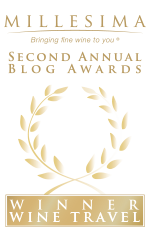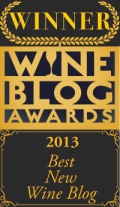
As beach season draws to a close (today, September 23rd, is the Fall Equinox, not Labor Day), I want to address a global wine-related epidemic that hits its zenith in summer. Throughout July and August, I visited several white wine producing regions in Oregon, Germany, and Switzerland (the Swiss not only make wine, but I’d argue it’s better than their chocolate and more affordable than their watches). With each vintner visit, our discussion of their carefully crafted whites and demand for their latest vintages inevitably led to the following conclusion: Consumers are sucking them down long before they should be opened. In other words, we drink white wine too young.
This deduction contradicts conventional wisdom. We’ve been taught the rule that the majority of whites should be consumed within a year or two of production, and that only sweet wines and expensive Old World expressions — the finest white Burgundy (chardonnay) in particular — truly deserve cellar time. During the summer, writers and retailers tout young, fresh wines as “porch pounders” and “poolside sippers,” employing reader hooks by comparing sauvignon blanc to a Harlequin beach read or pairing it to OMI’s catchy seasonal tune, “Cheerleader.” While such descriptors seem innocuous and fun, and may be meant to demystify wine, they also perpetuate the “white wines are simple and best drunk young” stereotype that shapes consumer behavior and the cycle of the industry.

A few weeks ago, I tasted a vertical of Oregon pinot gris (the same grape as pinot grigio). The King Estate Winery near Eugene presented me and several other journalists with a lineup of butter-hued bottles spanning a decade, pulled from their library. The wines were not their most expensive single-vineyard or domaine bottlings, but rather represented their entry-level “signature” line, retailing upon debut for approximately $17.
The current release, a 2014, drank straight, snappy, and undemanding, evocative of an electrified bellini (more voltage than fruit, due to high level of acid). Without the opportunity to compare it to older vintages, a regular Jane in the tasting room probably would conclude the wine good, but simple and best drunk young, and pick up a bottle or two to quaff at her upcoming weekend patio party.
As a journalist — admittedly with insider access — tasting the ’14 alongside the ’11, ’08, ’07, ’06, and finally the ’05 proved not only that Oregon pinot gris ages spectacularly (really, spectacularly!), but that comparatively, with no disrespect to the taut and vibrant ’14, drinking the latest release tasted akin to biting an underripe peach. Extra time in bottle — even just two more years — gently softens sharp edges, while allowing the wine to develop weight, texture, and layers of flavor (marmalade, tropical fruits, nuts, and honey), transforming that tart rock into a juicy, sun-kissed, tree-picked pleasure. Unfortunately, wine requires more time and patience to “ripen” than does a piece of fruit.
So why do we drink our wines so young, and what can we do about it? (To clarify, this discussion does not encompass cheap, mass-produced wines of vague origin.) Certainly, the freshness of a wine may be its chief draw, depending on the occasion; I won’t deny the pleasures of a young Txakoli or Muscadet paired to lemon-spritzed seafood. But we also have a culture that embraces youth and perpetuates the myth that complexity is somehow too demanding on the senses, especially in the summertime. “I want an easy wine that doesn’t challenge me or make me think” is a commonly sung refrain. But complexity in wine doesn’t equate to a tedious, cerebral exercise; “complex” is a synonym for evolving aromas and flavors, which tend to deliver more deliciousness, resulting in more pleasure. Yes, there are some wine drinkers who love the sharp, steely edge of an austere infant wine. But even the makers of such wines argue they need — deserve — a few years to harmonize in the bottle, too.

Unfortunately, producers and retailers don’t make it easy to find older vintages on the market. Winemakers admit they release wines far earlier than they’d like, often to meet demand, citing customers (including exporters, distributors, and consumers) who refuse to buy previous vintages once a new one comes due for release. But they also do it for the infusion of cash. The old adage that vintners in Europe could count on one vintage in the vineyard, one in the cellar, and one in the bank no longer holds true given the tough economics of the modern winemaking business.
Retailers generally don’t have the space or financial means to take on the task of cellaring wines, especially ones that won’t yield a worthwhile profit from the time investment — to wit, white wines lacking in pedigree and price point like Soave, or, frankly, Muscadet Sèvre et Maine, which ages surprisingly well. Restaurants are a better source for indulging in developed examples, but prices can be off-putting. Other ideas include calling up wineries to ask about purchasing library wines and seeking placement on email lists with specialty retailers like Chambers Street Wines, to be notified when they make cellar acquisitions. Ultimately, however, the onus falls on us to change our drinking behavior. Try holding back a bottle or two, even for just a year (assuming you have the storage space and optimal conditions, like a wine fridge, to do so), to increase the wine’s pleasure factor. After all, isn’t deriving pleasure the point of drinking wine?
Below are a few examples of whites worthy of extra time in the bottle, but the list goes on: grüner veltliner, Muscadet, assyrtiko, savatiano, chasselas, gewürztraminer, Bordeaux grapes (sauvignon blanc, semillon), Rhône grapes (viognier, roussanne, marsanne), albariño, savagnin (a/k/a heida, paien, traminer). If you find older examples of these wines (ranging from two to ten years, depending on variety, producer quality, and vintage) in a reputable retail shop or restaurant, don’t hesitate to select one; they likely stocked it on purpose.

Riesling With its high acidity and propensity over time to reveal layers of exotic flavor like a vinous Dance of the Seven Veils, riesling is one of the most suitable — and rewarding — wines to age in the world: the Christie Brinkley of grapes. Aromatics range from mineral, spice, and smoke to citrus, stone fruit, and honeyed, luscious tropical notes, depending, again, on the region, producer, and vintage, but also the amount of residual sugar left in the wine, a factor found mostly in German riesling.
David Salinas, wine buyer for Chambers Street Wines, not only agrees (not about Christie Brinkley), but pointed out that Jancis Robinson does, too. Salinas said that a few years ago the English wine critic “conducted a head-to-head tasting of older red Bordeaux and older Riesling with the aim of evaluating, as a group, which wines had aged more gracefully, and for her panelists, the winner was riesling.” Look to Germany, Austria, Alsace, Australia, and American regions/states like the Finger Lakes, Oregon, and Washington.
Garganega Known for dry, medium-bodied, moderate-alcohol wines showing lemon-citrus, yellow fruits, bitter almond, and often a whiff of white flowers or chamomile on the nose, you probably know Garganega better as the predominant grape grown in Soave, a historic region in Italy’s Veneto. Soave has suffered an image problem as a cheap wine region; producers capitalized on the wine’s popularity in the Seventies and churned out insipid, industrial-quality wine. But the region has enjoyed a quiet revival, with quality-minded producers like Gini, Pieropan, and Inama making a range of age-worthy wines from Classico DOC, Superiore DOCG, and single-vineyard sites experimenting also with oak-aged styles.
According to Evan Goldstein, MS, “quality Soave can age and age well…high-end cru Soave can age for a much longer time than people think. Volcanic soils produce bigger, richer, ‘oilier,’ longer-lived wines.” Recent vintages have expressed riper, weightier, and richer wines balanced with a minerality that builds a solid case for the aging potential in the region, thanks in large part to Soave’s ancient volcanic soil.
Viura Also known as macabeu/maccabéo in southern France’s Roussillon, and macabeo in much of Spain, viura is the primary grape variety of white Rioja. Dry, fruity, and low in acidity (for an age-worthy grape), many simple, low-quality wines have been made from it due to the vine’s troublesome nature in the vineyard. But in the hands of producers like Lopez de Heredia, Allende, and Marqués de Murrieta, the wine develops character and verve in the bottle. Rioja as a region has touted its aging of tempranillo-based red wines as a reason consumers should buy them. Lopez de Heredia does the same for its whites, regularly releasing older vintages onto the market. (Bottlerocket Wine & Spirit in Chelsea recently stocked the 1999.)
Carrie Strong, wine director at Aureole, loves aged expressions of white Rioja, and rotates them into her list when available. “Older Rioja blanco wines are absolutely beautiful, showing off like a sassy chardonnay wearing a flamenco dress complete with castanets, daring white Rhone Valley varietals to age nearly as well. These sultry whites show off their salty, almond, and herbaceous notes with an irreverent snare but embrace the dance that is a perfect food-and-wine pairing.”
Chenin Blanc Thanks to Pascaline Lepeltier, wine director for Rouge Tomate and staunch advocate for chenin blanc, many wine lovers now have a deeper appreciation for this versatile grape. It’s light body and naturally high acidity, especially when grown in its spiritual home the Loire Valley in France, means chenin can produce dry, sweet, still, and sparkling wines, all of which can age successfully, sometimes for decades. South Africa may be the biggest competitor to the Loire in terms of quality, especially from old bush vines found in places like Swartland. Mullineux, Sadie Family, and Botanica are all putting their personal stamp on the grape.
Juliette Pope, wine director at Gramercy Tavern, likes to introduce chenin to customers looking for older whites. “Chenin, like riesling, typically has that very food-friendly acidity level, as well as buckets of fruit, honey, and minerality, especially when we are talking Loire Valley, which is where any of our older ones come from. All of this can meld with age into such savory, layered, lamb’s-woolly beasts that cry out for drinking with all manner of stronger cheeses, dark-meat poultry, fattier pork, and lobster.”
Pinot Blanc In youth, this grape often comes off bland and neutral, offering, at best, white florals, delicate fruit, and fresh, moderate acidity; but with age, the best examples from Germany, Italy, and Alsace shed their ugly-duckling feathers to take on a nutty richness, roundness, and creaminess. However, it took a deep dive into Austria’s terroir and treatment of pinot blanc, especially around Styria and Burgenland (look for wines from Leitner, Heinrich, and Beck), where the wines often see oak aging, to convert me into a pinot blanc believer. During a recent conversation with an Austrian producer, the vintner reminded me why they call the grape “weissburgunder,” or white Burgundy: “because it mimics Burgundian chardonnay without the price tag,” he exclaimed gleefully.
Rosé I added this category of pink wine after Tom Geniesse, owner of Bottlerocket Wine & Spirits, pointed out that the same question regarding the aging of white wines applies to rosé wines, too. “Some rosé,” he said, “improves with a little bit of age. Not all. But to generalize and say they all MUST be new, new, new is an oversimplification of this complex beverage.”








